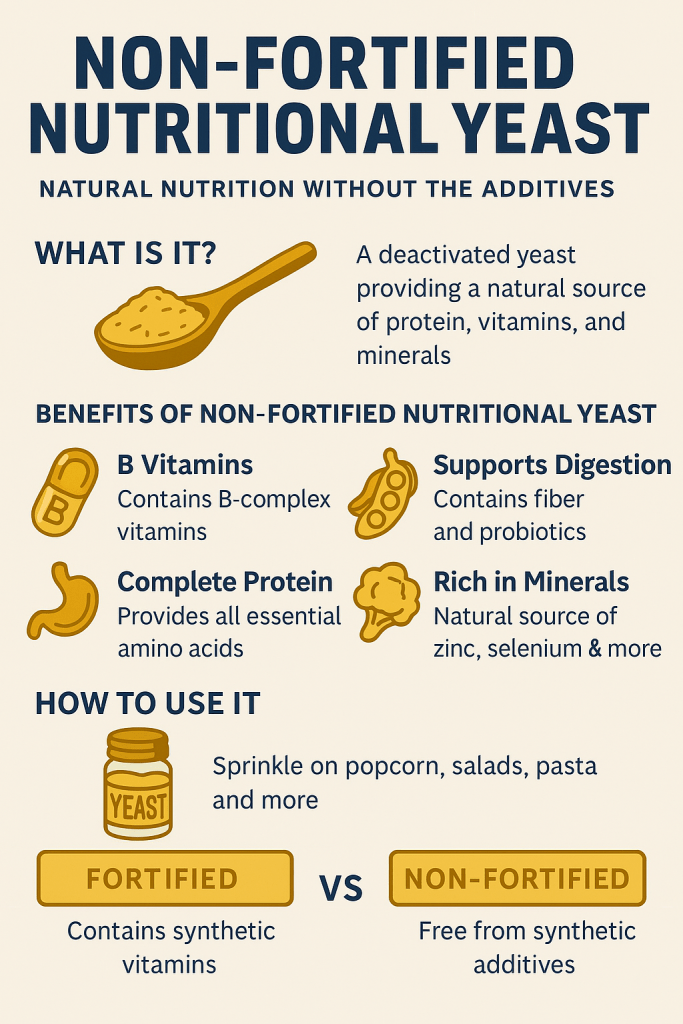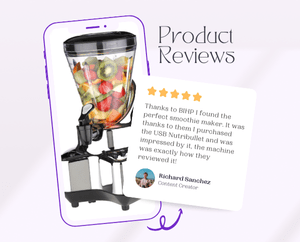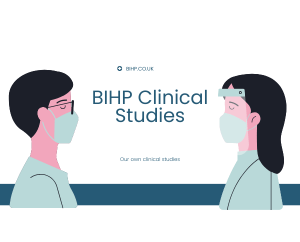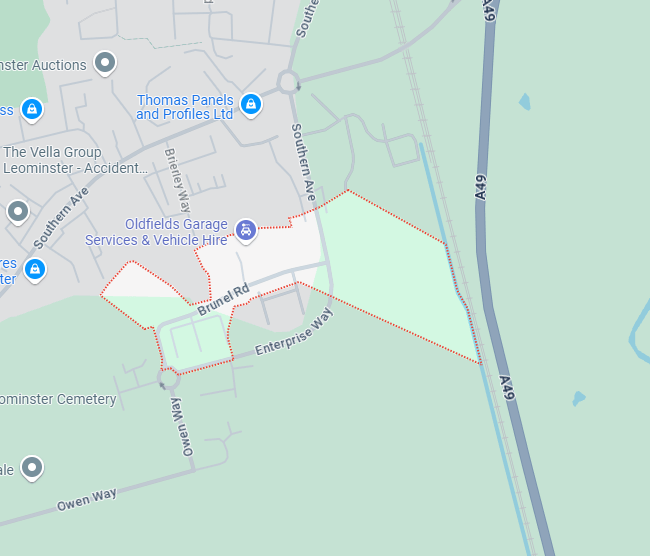Non-Fortified Nutritional Yeast: The Clean Alternative with Real Benefits
Non-fortified nutritional yeast probably isn’t something you’d think of unless you’re deep into clean eating or plant-based living. But let me tell you — if you care about whole food nutrition without the added fluff, this little yellow flake might just be a quiet powerhouse.
I first stumbled across it during a phase of cutting back on supplements. My goal was simple: get more from food, less from a bottle. And I didn’t want synthetic additives riding along.
That’s when non-fortified nutritional yeast showed up. Medical research.
What Actually Is Non-Fortified Nutritional Yeast?
You’ve likely seen nutritional yeast on shelves — golden flakes, nutty aroma, often labelled as a “vegan cheese substitute.” The difference? Fortified versions are spiked with synthetic B vitamins — especially B12 — to make them more “marketable.”
Non-fortified nutritional yeast skips all that.
It’s grown on molasses, harvested, washed, and dried at low temperatures to preserve nutrients. No extras. No synthetic colourants.
So what you get is pure inactive yeast that’s naturally rich in B-vitamins, amino acids, and trace minerals — exactly as nature intended.
Why I Switched to the Non-Fortified Version
Like many, I started with the regular stuff. It tasted great, but I didn’t love the idea of lab-made vitamins being added in post-production.
My body felt off after taking too many fortified foods. Skin flared up. Energy dipped. Something wasn’t sitting right.
Once I swapped to non-fortified yeast, things changed. My digestion improved. My skin calmed. And I felt more balanced — no exaggeration.
Plus, I knew I was getting whole nutrients, not synthetic ones my body had to struggle to absorb.
Nutritional yeast is a great natural source of B vitamins, but for a more targeted daily lift, vitamin B12 drops are worth a look. They’re especially helpful if you need quick absorption or struggle with low B12 levels. Together, they make a powerful duo for supporting natural energy and focus.
What Non-Fortified Nutritional Yeast Actually Does for You
Let’s get into the real-world benefits — and why I’ve kept it in my diet ever since.
1. It’s a Brilliant Natural Source of B Vitamins
Yeast is naturally rich in several B vitamins — particularly B1 (thiamine), B2 (riboflavin), and B6. These help with energy, focus, and nervous system function.
Unlike fortified versions, non-fortified nutritional yeast offers these in lower, gentler doses. That means your body absorbs what it needs — without being overloaded.
2. It’s Packed with Protein and Amino Acids
Per tablespoon, this stuff provides around 2–3g of protein — and it’s a complete source, meaning it contains all nine essential amino acids.
For plant-based eaters, that’s gold.
Furthermore, it’s free from allergens like gluten, dairy, and soy, so it’s safe for most diets.
3. It Supports Gut Health Without Overdoing It
Because it’s inactive yeast, it won’t contribute to candida or mess with your gut flora. In fact, it contains beta-glucans — compounds known to support immune health and soothe inflammation.
Also, it’s easier on digestion than fortified versions. I’ve found no bloating, no weird aftertaste, and no skin reactions since switching.
4. It’s Naturally Rich in Trace Minerals
Here’s something few people realise: non-fortified nutritional yeast contains zinc, selenium, manganese, and even a bit of magnesium — all naturally present from the fermentation process.
Because of that, it’s a handy way to top up your mineral intake without relying on supplements or over-processing.
How I Use It Daily (Without Feeling Like I’m Eating Dust)
I sprinkle it on:
-
Steamed veg — especially broccoli or carrots
-
Soups or stews for a cheesy, umami kick
-
Mashed potatoes (trust me)
-
Scrambled eggs or tofu
-
Avocado toast
-
Even homemade popcorn
It’s incredibly versatile. Once you get the hang of it, non-fortified nutritional yeast becomes a secret weapon — especially for savoury dishes that need a little lift.
Fortified vs Non-Fortified: What’s the Big Deal?
Fortified nutritional yeast might look the same, but it’s totally different in how it works with your body.
Non-fortified versions:
-
Don’t contain synthetic B12 (cyanocobalamin)
-
Have no added folic acid — just the natural kind
-
Are less likely to cause skin issues or energy crashes
-
Taste milder and more natural
Additionally, for those with MTHFR gene variations (many people don’t even realise they have it), avoiding synthetic folic acid is a big deal.
Nutritional yeast is a fantastic source of natural B vitamins and protein. To further enhance your nutrient intake, pairing it with our flaxseed bread can provide a balanced and healthful meal option.
Are There Any Downsides?
Honestly, very few.
The only caution? If you rely solely on nutritional yeast for B12, non-fortified won’t cut it — you’ll need a separate methylated B12 supplement.
Other than that, it’s safe, gentle, and incredibly nutritious.
Final Thoughts: Is Non-Fortified Nutritional Yeast Worth It?
If you’re trying to eat clean and ditch the additives, nutritional yeast is a no-brainer.
It’s nutrient-dense, versatile, and easier on your system than the fortified stuff. It won’t flood your body with synthetic vitamins. Instead, it gives you a natural dose of what you actually need — with none of the junk.
So if you’re after real food, real nutrients, and a bit of cheesy flavour without dairy — give it a go.
It’s simple. It’s smart. And it’s a switch your body might genuinely thank you for.
Looking for extra skin and hormone support? Black currant seed oil complements nutritional yeast beautifully.






